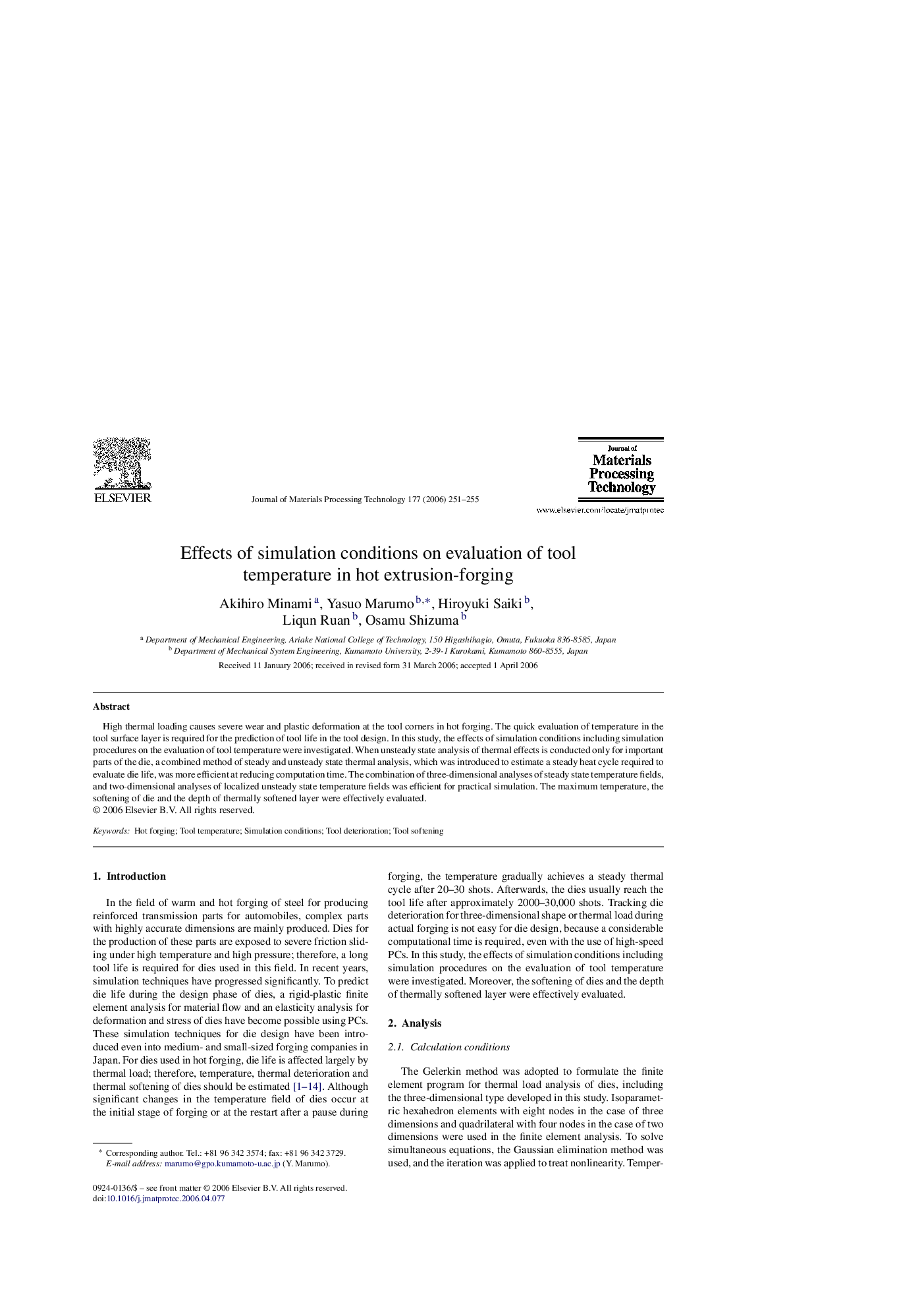| Article ID | Journal | Published Year | Pages | File Type |
|---|---|---|---|---|
| 794469 | Journal of Materials Processing Technology | 2006 | 5 Pages |
High thermal loading causes severe wear and plastic deformation at the tool corners in hot forging. The quick evaluation of temperature in the tool surface layer is required for the prediction of tool life in the tool design. In this study, the effects of simulation conditions including simulation procedures on the evaluation of tool temperature were investigated. When unsteady state analysis of thermal effects is conducted only for important parts of the die, a combined method of steady and unsteady state thermal analysis, which was introduced to estimate a steady heat cycle required to evaluate die life, was more efficient at reducing computation time. The combination of three-dimensional analyses of steady state temperature fields, and two-dimensional analyses of localized unsteady state temperature fields was efficient for practical simulation. The maximum temperature, the softening of die and the depth of thermally softened layer were effectively evaluated.
